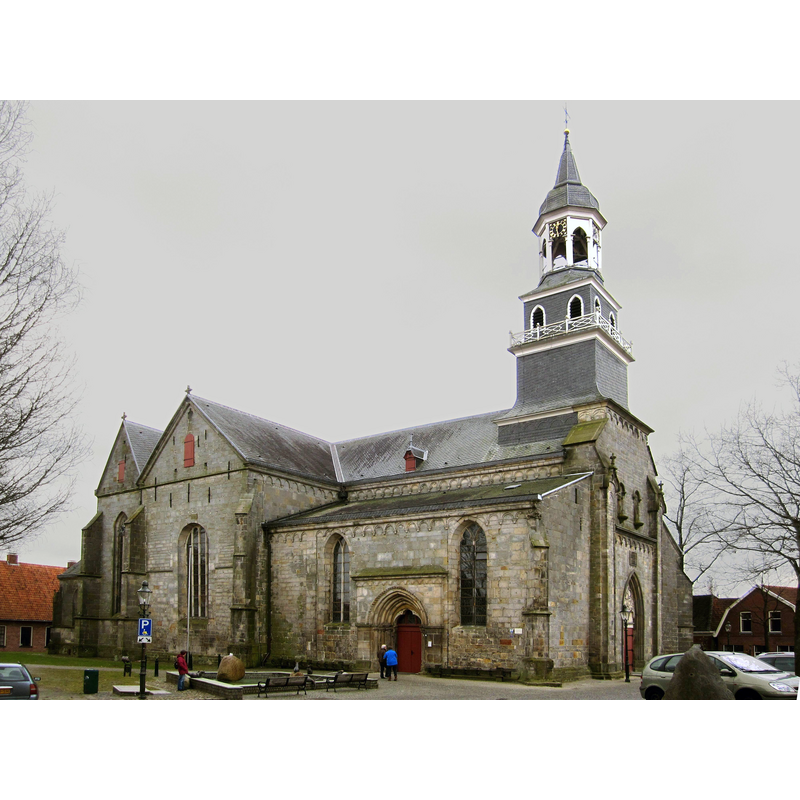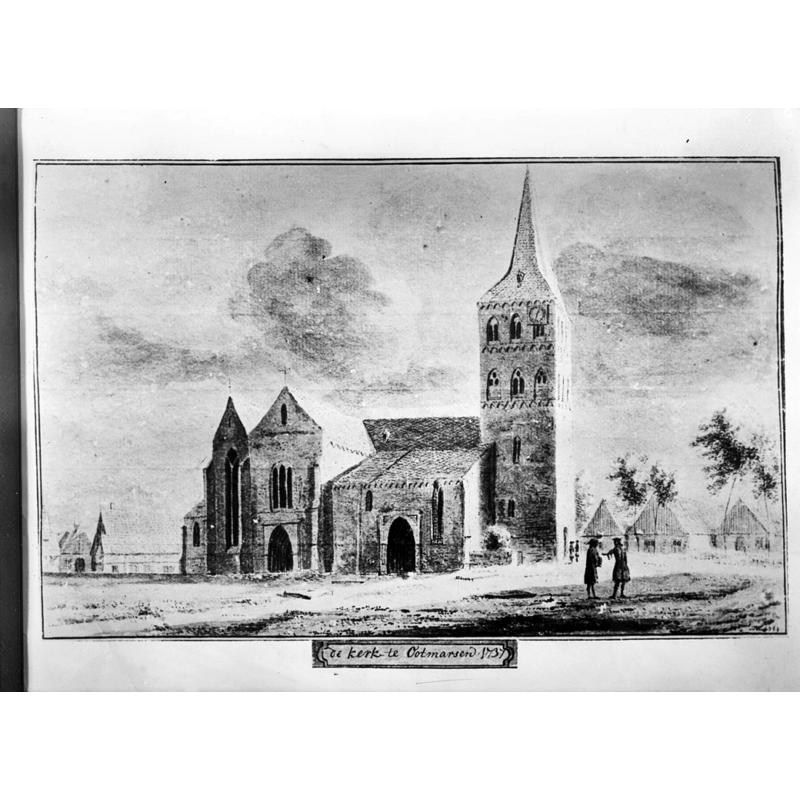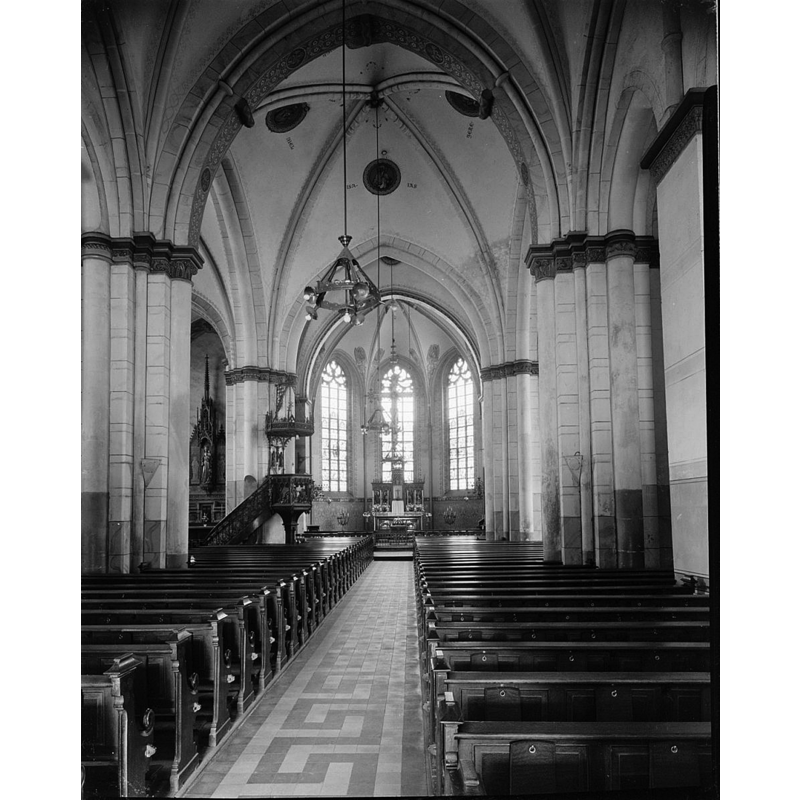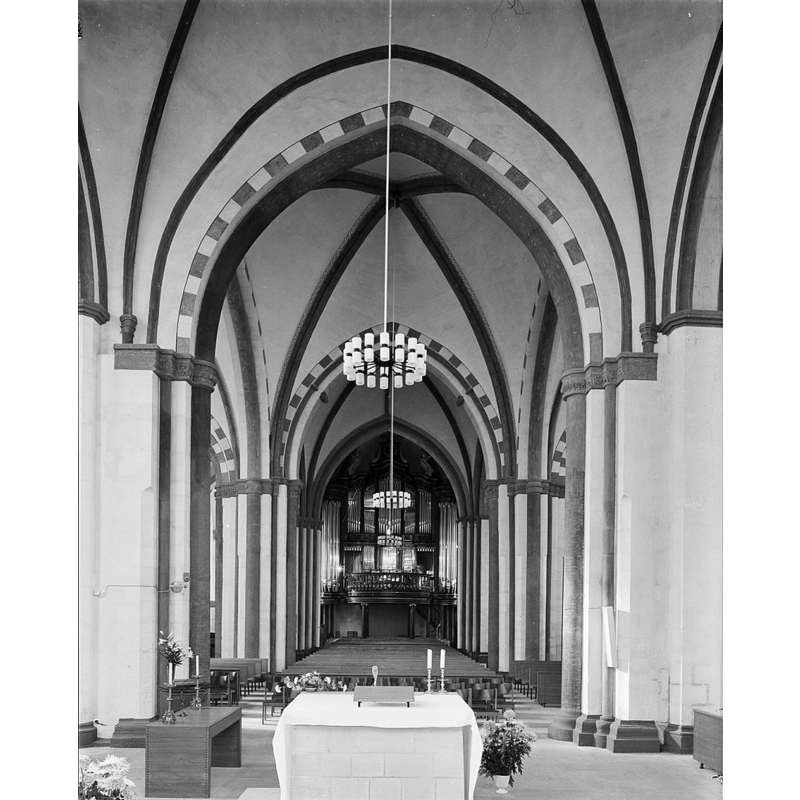Ootmarsum
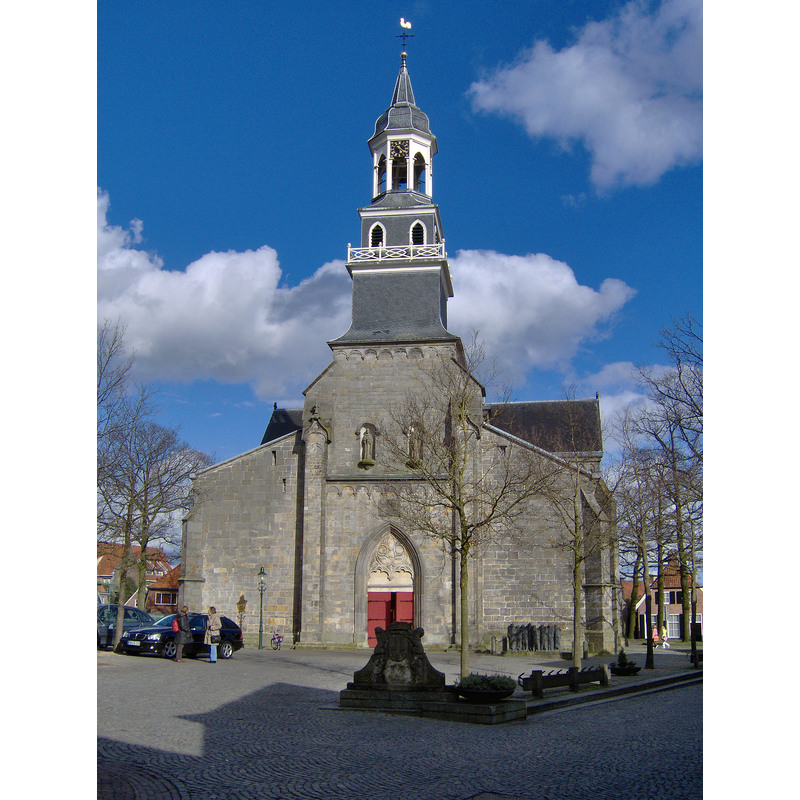
Image copyright © Tubantia, 2008
GFDL / CC-BY-SA-3.0,2.5,2.0,1.0
Results: 8 records
design element - motifs - vine
view of church exterior - northwest view
Scene Description: Source caption: "Ootmarsum (Niederlande), Katholische Kirche"
Copyright Statement: Image copyright © Uwe Barghaan, 2012
Image Source: digital photograph 14 March 2012 by Uwe Barghaan [https://commons.wikimedia.org/wiki/File:Ootmarsum_Katholische_Kirche.jpg] [accessed 22 December 2021]
Copyright Instructions: CC-BY-SA-3.0
view of church exterior in context
Scene Description: Source caption: "Rooms-Katholieke Kerk: aanzicht naar prent 1737"
Copyright Statement: Image copyright © Rijksdienst voor het Cultureel Erfgoed, 2021
Image Source: digital image of a 1737 print in the Rijksdienst voor het Cultureel Erfgoed [https://commons.wikimedia.org/wiki/File:Aanzicht_naar_prent_1737_-_Ootmarsum_-_20176632_-_RCE.jpg] [accessed 22 December 2021]
Copyright Instructions: CC-BY-SA-4.0
view of church exterior in context - west view
Scene Description: Source caption: "The roman catholic church Saints Simon and Judas in Ootmarsum, Overijssel, The Netherlands"
Copyright Statement: Image copyright © Tubantia, 2008
Image Source: digital photograph 5 April 2008 by Tubantia [https://commons.wikimedia.org/wiki/File:RK_Kerk_H.H._Simon_en_Judas_Ootmarsum.JPG] [accessed 22 December 2021]
Copyright Instructions: GFDL / CC-BY-SA-3.0,2.5,2.0,1.0
view of church interior - looking east
Scene Description: Source caption: "Rooms-Katholieke Kerk: interieur naar het oosten"
Copyright Statement: Image copyright © Rijksdienst voor het Cultureel Erfgoed, 2021
Image Source: digital image of a July 1962 B&W photograph by G.Th. Delemarre, in the Rijksdienst voor het Cultureel Erfgoed [https://commons.wikimedia.org/wiki/File:Interieur_naar_het_oosten_-_Ootmarsum_-_20176297_-_RCE.jpg] [accessed 22 December 2021]
Copyright Instructions: CC-BY-SA-4.0
view of church interior - looking west
Scene Description: Source caption: "Rooms-Katholieke Kerk: interieur naar het westen"
Copyright Statement: Image copyright © Rijksdienst voor het Cultureel Erfgoed, 2021
Image Source: digital image of a November 1973 B&W photograph by A.J. van der Wal, in the Rijksdienst voor het Cultureel Erfgoed [https://commons.wikimedia.org/wiki/File:Interieur_naar_het_oosten_-_Ootmarsum_-_20176689_-_RCE.jpg] [accessed 22 December 2021]
Copyright Instructions: CC-BY-SA-4.0
view of font in context
Scene Description: the object of contention [cf. FontNotes] located beneath the organ loft; the base is a later unrelated addition
Copyright Statement: Image copyright © [s.n., s.d.]
Image Source: digital photograph [source unknown] provided by Pol Herman
Copyright Instructions: PERMISSION NOT AVAILABLE -- IMAGE NOT FOR PUBLIC USE
INFORMATION
FontID: 23610OOT
Object Type: Baptismal Font1?
Church/Chapel: Rooms Katholieke-kerk H.H. Simon en Judas
Church Patron Saints: St. Simon & St. Judas Thaddeus
Church Location: Kerkplein, 7631 BX Ootmarsum, Netherlands -- Tel.: +31 541 292 991
Country Name: Netherlands
Location: Overijssel
Directions to Site: Located off (S) the N349 [aka Almelosestraat / Denekamperstraat], in the municipality of Dinkelland, 15-20 km W of Nordhorn, about 25 km N of Enschede
Font Location in Church: Inside the church, beneath the organ loft [cf. FontNotes]
Date: ca. 1400?
Century and Period: 14th - 15th century [basin only] [composite font], Medieval
Credit and Acknowledgements: We are grateful to Pol Herman for bringing this font to our attention and for his help in documenting it
Church Notes: medieval church documented 1162; re-built by 1195-1196; modified mid-13thC, late-15thC; medieval tower demolished by mid-19thC
Font Notes:
Click to view
Besides the font in use located towards the east end of the nave there is an object of related interest in this church; according to the sources below supplied by Pol Herman (e-mail of 9 December 2021) it was was found in the garden of Van Reekshuis, Oude Markt 26, Enschede. The Van Heekshuis is now the Creative Center, Oude Markt 26, Enschede. Jan Bernard van Heek (1863-1923), partner of Van Heek & Co., married to the American Edwina Burr Ewing, was a lover of art and (regional) history and the initiator of the Rijksmuseum Twenthe. It is also known that he travelled the Dutch country side to acquire antiques from churches and villagers for his own collection (see the baptismal font of Otterlo, now at Huis Bergh). It was donated to the Rooms Katholieke-kerk H.H. Simon en Judas of Ootmarsum ca. November 1929. The sources debate whether the basin is part of a baptismal font, a lavabo, a piscina, etc. One of the sides of the octagonal basin has been chiselled off, probably to fit it against a wall or tight space, and possibly related to its use as piscina or lavabo [cf. infra]. The columnar base is a later addition.
Source: Zeno Kolks' A RELIGIOUS OBJECT IN THE COLLECTIONS OF THE VAN DEINSE INSTITUTE, WHICH FUNCTION IS UNSURE, in ‘t Inschrien, vierendertigste jaargang, nr. 3, July 2002, pages 117-119: On November 21, 1929, J.H. van Heek writes to Ms. Elderink and Messrs. Beudt, Lasonder, Ter Kuile and Snuif: "In the garden of the Van Heekshuis is a Romanesque (sic!) baptismal font or holy water basin, originating from France. The foot (meaning the column and the base) is modern. The Family is prepared to present this to the Oudheidkamer as a gift. if the Board believes it has space for the piece. I request that you consider this." (1) The board of the Oudheidkamer Twente did not think long about this offer, because the object was added to the collection in the same year (inv. no. OKT 494). Of the object - as mentioned - only the basin is original. It has a height of 44 cm, and consists of northern French limestone (2) The outer shell is octagonal (fig. I), with the length of the sides varying from 28 to 33 cm. One of these sides is flat; the others are decorated with a vegetable ornament, consisting of leaves and (stylized) bunches. The style of the basin is not Romanesque, as Van Heek claims, but Gothic. On the basis of the formal language of the decoration, the object can be dated around 1400. The octagonal upper part is hollowed out in the form of a cylinder, which has a diameter of 50 cm and a depth of 30 cm. In the middle of the bottom of this cylinder is a vertical water outlet with a diameter of 6 cm, which has been widened at the top to 9,5/10 cm (to allow for a closing piece?). We can only guess at to the function of this object. It is clear that it was intended as a reservoir for water, and that it must have had an ecclesiastical purpose. However, further specification of the function poses a number of problems. Let me try to formulate the arguments pro and con succinctly, and then offer the most obvious explanation. Since 1929, the tub has generally been mistaken for the remains of a baptismal font (3). Indeed, many Gothic fonts have an octagonal shape, but they usually stand free in space (the reason why all sides are decorated (4). Moreover, they are or they were, as a rule, provided with a lid, and there is no trace of this here. A baptismal water drain sometimes occurs in baptismal fonts (5), but is certainly not common. Based on this argumentation, it is therefore not obvious that the basin was part of a baptismal font, although this possibility cannot be completely excluded. The flat side of the basin rather pleads for a holy water basin, as this basin often stands against a wall and is not closed with a lid. But the shape seems too monumental for such an object (6) and, moreover, I do not know of a holy water bowl with a drain. The fact that the basin would be a remnant of a holy water font therefore seems even less likely to me. A third possibility is that we are dealing with an object for washing hands as it happened before the start of the Holy Services or communion (laundry basin, sink, lavacrum, lavatorium, (fig. 2). Such 'washbasin' do have a water outlet, but are fount repeatedly free in the space in monasteries. In sacristies, such a basin usually forms the lower end of a niche, built into the wall and - in the form of a polygon - normally protruding from the wall on five sides. This function seems - of the three options mentioned - to be the least suitable for our basin. A last conceivable function is that of a piscina (fig. 3): an object in which the celebrating priest rinsed the sacred vessels. This piscina carried any particles of holy wafers or remnants of wine (the blood of Christ) through a tube-like opening to the consecrated earth outside the church building (7) or - as in our case – probably to that under the church floor. From an article submitted to me by Mrs. M. Hesselink-van de Riet, it appears that there are not only niche-shaped piscinae, but also font-like ones, which may or may not be placed against a wall (8). To consider the tub as part of a piscina seems the most plausible to me. Due to the housing problems of the Van Deinse Institute in Enschede, this object has been installed in the church of Saints Simon and Judas in Ootmarsum, where it has found a place under the organ.
Notes to the text above:
1. Archive Of Deinse Institute Enschede.
2. Mr Querido of the National Office for the Preservation of Monuments in Zeist identified the material in 1986 as Faverolles, a type of limestone from the area north of Paris (41400 Faverolles sur Cher). In view of the color and application of this stone (see A. Slinger, H. Janse and G. Berends: Natuursteen in Monumenten, Zeist/Baarn 1980, p. 62), this attribution seems doubtful to me.
3. This is how it is still described in the documentation systems of the Van Deinse Institute.
4. Cf. H. Hagens: Old baptismal fonts in Twente (continued), in: 't Inschrien, fifteenth volume number 2, April 1983, p. 28.
5. See e.g. M. Schönlank-van der Wal: Medieval stone baptismal fonts in the Netherlands, an investigation into the causes of their diversity, Amsterdam 1994 (diss. VU), p. 61.
6. Cf. H. Hagens: o.c. (see note (4)) p. 29.
7. As with the Old Church of Borne (c. 1500). The water that ran through the piscina (fig. (3)) still present here, discovered by Mr. J. Grootenboer, underwent a fall of 32 cm. before it overflowed the consecrated earth at the mouth of the drain.
8. Reinboth, F.: Freistehende Piszinen in Zisterzienserkirchen, in Harz-Zeitschrift 43/44 92,
9. Braunschweig 1992, pp. 141–142.
COORDINATES
Church Latitude & Longitude Decimal: 52.407417, 6.897208
Church Latitude & Longitude DMS: 52° 24′ 26.7″ N, 6° 53′ 49.95″ E
UTM: 32U 356965 5808434
MEDIUM AND MEASUREMENTS
Material: stone, limestone?
Font Shape: octagonal (mounted)
Basin Interior Shape: round
Basin Exterior Shape: octagonal
Drainage Notes: no lining
Diameter (inside rim): 50 cm*
Basin Depth: 30 cm*
Basin Total Height: 44 cm*
Basin Upper Panel Dimensions: 28-33 cm*
Notes on Measurements: * [cf. FontNotes]

